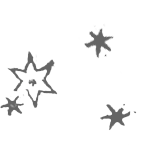The New Physics
Machines in Motion
Scientist-engineers of the 16th century debated the theoretical principles of machines in motion. Ancient sources included a treatise on mechanics attributed to Aristotle; the mathematical methods of Archimedes; and Hero of Alexandria’s analysis of five simple machines: the lever, pulley, wheel, wedge and screw. The design of large-scale, complex machines drew attention to weaknesses in existing theoretical frameworks which Galileo resolved in his new science of motion.
Browse Items on Display
| 0 |
Inclined plane instrument Mitchell, Ron (2015) |
|
| 0 |
Paul E. Klopsteg Collection of the History and Technology of Archery, miscellaneous items. Klopsteg, Paul E. |
|
| 0 |
Secret Book of the Quiver Ise, Heizo Sadatake (ca. 1846) Manuscript copy by Hajime Terai from original written in 1765 by Ise; illustrations copied by Odani. |
|
| 1 |
Elements of Geometry, 1482 Euclid, (1482) Euclid was the starting point for a mathematical approach to physics. This is the 1st printed edition. The beautiful woodcuts are hand-colored in this copy. The text of the first page was printed in both black and red ink. The geometrical diagrams were quite difficult to prepare. |
 |
| 2 |
Euclid's Elements of Geometry, 1594 Al-Tusi, Nasir ad-Din (1594) This Arabic text of Euclid came from the circle of the Persian astronomer al-Tusi (13th century). Al-Tusi worked in Baghdad and in the observatory of Maragha, in modern northwestern Iran. Printing Arabic with moveable type was a technological challenge. |
 |
| 3 |
Euclide Tartaglia, Niccolo (1543) Tartaglia, a teacher of a teacher of Galileo, produced the first vernacular translation of Euclid’s Elements of Geometry. |
|
| 4 |
Euclid's Elements of Geometry, 1589, vol. 1 Clavius, Christoph (1589) Not all versions of Euclid’s Elements were created equal. Clavius prepared this edition for his students at the Rome College (Collegio Romano). If these editions of Euclid were used in different courses, which course would you take? |
|
| 5 |
Euclid's Elements of Geometry, 1589, vol. 2 Clavius, Christoph (1589) Not all versions of Euclid’s Elements were created equal. Clavius prepared this edition for his students at the Rome College (Collegio Romano). If these editions of Euclid were used in different courses, which course would you take? |
|
| 6 |
Problems and Exercises in Aristotle’s Mechanics Baldi, Bernardino (1621) Aristotle’s Mechanics contained an analysis of the principles of motion and simple machines. While no longer accepted as an authentic work by Aristotle, its influence among Renaissance scientist-engineers was profound, as illustrated in this commentary by Baldi. |
 |
| 7 |
Works, Archimedes Archimedes, (1543) Archimedes (d. 212 B.C.) developed the law of the lever with his Treatise on the Balance. He contributed to arithmetic by devising methods for expressing extremely large numbers. He deduced many new geometrical theorems on spheres, cylinders, circles and spirals. |
 |
| 8 |
On Conic Sections Apollonius, (1710) Apollonius (3rd century B.C.E.) examined the properties of conic sections; namely, the: • circle (cuts a cone horizontally, perpendicularly to the axis of the cone) • ellipse (cuts a cone to make a closed curve) • parabola (cuts a cone parallel to a side of the cone) • hyperbola (cuts a cone in... |
|
| 9 |
The Burning Mirror Cavalieri, Bonaventura (1632) Archimedes died defending the ancient city of Syracuse, on the island of Sicily, from the Carthaginian navy. Reports attributed the defense of the city to his ingenuity, including giant mirrors capable of setting attacking ships in the harbor on fire. |
|
| 10 |
Commentary on Aristotle’s Posterior Analytics Philoponus, (1504) In the 6th century, the Greek physicist and theologian Philoponus constructed an anti-Aristotelian theory of motion. For Philoponus, an “impressed incorporeal motive force” explains the motion of a top, a projectile, and falling bodies. |
|
| 11 |
Mathematical Works Stevin, Simon (1634) Stevin’s work represents that of a scientist-engineer in the Low Countries, whose major works appeared in Dutch. Like the scientist-engineers of Italy, Stevin maintained water systems and improved fortifications. He investigated the mechanics of motion, falling bodies and hydraulics. |
|
| 12 |
On the Center of Gravity of Solids, 1661 Valerio, Luca (1661) Analyzing the center of gravity of an object was a traditional problem addressed using the methods of Archimedes. Galileo referred to Valerio as “the Archimedes of our age” and recommended him for membership in the Academy of the Lynx. |
|
| 13 |
On Perspective Monte, Guidobaldo del (1600) Kepler, Galileo and Guidobaldo were the leading optical theorists of their generation. Galileo studied with Guidobaldo while he was composing this treatise. |
 |
| 14 |
On Mechanics Monte, Guidobaldo del (1577) Hero described five simple machines: the lever, pulley, wheel, wedge and screw. In this theoretical investigation of the foundations of mechanics, Guidobaldo demonstrated that all five machines could be deduced from the principle of the lever. |
|
| 15 |
Galileo, Mechanics Marsenne, Marin (1634) As a young scientist-engineer, Galileo wrote two manuscripts on motion. The first, Delle macchine, written ca. 1592; reflected the tradition of Aristotle’s Mechanics. It was never printed. The second, revised study, Le mechaniche, written ca. |
|
| 16 |
Mathematical Discourses Galileo , (1730) This is the first separate English edition of Galileo’s Discourse on Two New Sciences, his masterwork in mathematical physics. The “two new sciences” are tensile strength and motion. |
 |
| 18 |
Book of the Arrow Nobutoyo, (ca. 1846) Galileo’s mechanics demonstrated that projectiles follow a parabolic path. This is true whether the projectile is a cannonball, an arrow or a football. This set of four Japanese Samurai manuscripts, drawn on rice paper in the mid 1800’s, was copied by hand from mid-16th-century sources. |
|
| 19 |
Book of Leggings Nobutoyo, (ca. 1846) Galileo’s mechanics demonstrated that projectiles follow a parabolic path. This is true whether the projectile is a cannonball, an arrow or a football. This set of four Japanese Samurai manuscripts, drawn on rice paper in the mid 1800’s, was copied by hand from mid-16th-century sources. |
|
| 20 |
Secret Book of Hunger for the Target Ise, Heizo Sadatake (ca. 1846) Galileo’s mechanics demonstrated that projectiles follow a parabolic path. This is true whether the projectile is a cannonball, an arrow or a football. This set of four Japanese Samurai manuscripts, drawn on rice paper in the mid 1800’s, was copied by hand from mid-16th-century sources. |





